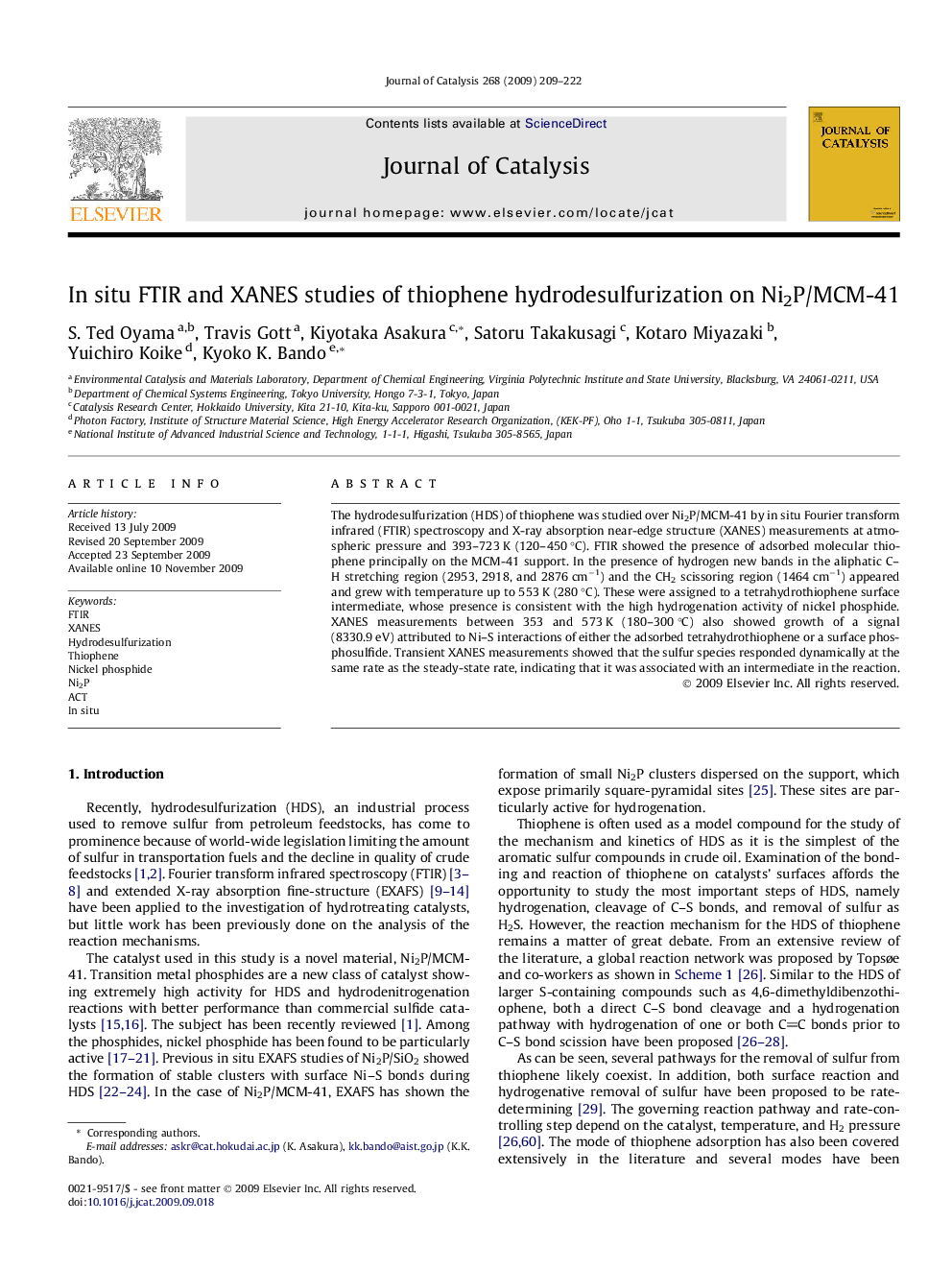| Article ID | Journal | Published Year | Pages | File Type |
|---|---|---|---|---|
| 61962 | Journal of Catalysis | 2009 | 14 Pages |
The hydrodesulfurization (HDS) of thiophene was studied over Ni2P/MCM-41 by in situ Fourier transform infrared (FTIR) spectroscopy and X-ray absorption near-edge structure (XANES) measurements at atmospheric pressure and 393–723 K (120–450 °C). FTIR showed the presence of adsorbed molecular thiophene principally on the MCM-41 support. In the presence of hydrogen new bands in the aliphatic C–H stretching region (2953, 2918, and 2876 cm−1) and the CH2 scissoring region (1464 cm−1) appeared and grew with temperature up to 553 K (280 °C). These were assigned to a tetrahydrothiophene surface intermediate, whose presence is consistent with the high hydrogenation activity of nickel phosphide. XANES measurements between 353 and 573 K (180–300 °C) also showed growth of a signal (8330.9 eV) attributed to Ni–S interactions of either the adsorbed tetrahydrothiophene or a surface phosphosulfide. Transient XANES measurements showed that the sulfur species responded dynamically at the same rate as the steady-state rate, indicating that it was associated with an intermediate in the reaction.
Graphical abstractIn situ infrared spectroscopy during hydrodesulfurization of thiophene over Ni2P/MCM-41 showed the presence of tetrahydrothiophene, while transient X-ray absorption spectroscopy showed a Ni–S bond due to this species or a phosphosulfide.Figure optionsDownload full-size imageDownload high-quality image (28 K)Download as PowerPoint slide
